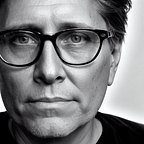Humanity, Artificial Intelligence And A Path To The Divine
How beauty can take us on a transcendent voyage.
Stendhal’s syndrome is a condition in which an individual experiences brief episodes of anxiety and confusion when exposed to great works of art, particularly in the city of Florence. It was first described by Stendhal, a 19th-century French author, who felt overwhelmed while visiting the Santa Croce basilica. Symptoms of Stendhal’s syndrome include tachycardia, dizziness, fainting, and even hallucinations. In particular, Florence has been identified as an epicenter for Stendhal’s syndrome due to its abundance of stunning Renaissance artwork and architecture. Interestingly enough, Stendhal’s syndrome has been used to describe a variety of reactions including attraction and excitement.
The cause of Stendhal’s syndrome remains unknown; however, some scholars theorize that it may be due to overexposure to art or beauty. Think about that for a moment — overexposure to art or beauty? I wonder if the clinical condition is dose-related.
But the idea of being moved in the presence of beauty has a older and deeper origin. Seeing God can have profound physical and psychological effects, according to the Bible. Physically, those who behold God may become paralyzed with fear or tremble uncontrollably. For example, Isaiah 6:5 states that when Isaiah saw the Lord “I said, ‘Woe is me! I am undone!’” His reaction of terror indicates that even witnessing a vision of the divine was overwhelming for him. In addition, Daniel 10:8–9 describes how Daniel “fell into a deep sleep on his face, with his face toward the ground” when he beheld an angel from Heaven. Psychologically, those who see God may also experience intense feelings of awe and reverence for His purity and holiness as described in Exodus 3:6.
Similar to Stendhal’s Syndrome, the physical and psychological effects of seeing God according to the Bible are fear, trembling, awe, reverence, religious ecstasy, joy and deep convictions. These are very human emotions in response to a very spiritual concept.
Let’s push on this this concept of “profound beauty” a bit. Artificial intelligence has been used to create some stunning pieces of art, and in some cases, AI-generated art has even won prestigious art contests. For example, a painting created by an AI program called “Portrait of Edmond Belamy” was recently sold at auction for $432,500. Another fascinating example of AI pushing the bounds of art and beauty happened at the Colorado State Fair digital arts competition. The winning entry, by Jason Allen, was created using Midjourney, an AI program that turns text descriptions directly into images. The cash prize was $300, but the impact was priceless. In these cases, AI has pushed the bounds of art and creativity to a new level.
And if technology can expand the creation of something sublime, how will it impact the psychophysiology associated with Stendyal’s Syndrome? Any beyond terrestrial art, can AI extend the boundaries of creativity to something beyond our worldview to that which is transcendent or even Divine? It’s been argued that technology and modernism have neutered the expressive nature of humanity and doomed it to a frigid reductionist perspective. But ironically, it’s a technology and artificial intelligence that might be defining a new “techno-reality” where the bounds of beauty are pushed beyond a current sensibility. Perhaps AI will redefine creativity and beauty to act as a catalyst for human transformation like those in Florence or even akin to that of Isaiah or Daniel.
Where would that leave Stendhal? And perhaps even more importantly, where does that leave you and me standing in front of the next David? But this time, 3D printed from a design by artificial intelligence? Technology is reinventing the world, and sometimes, it’s taking humanity on a path of its own creation. And that path — of beauty and ecstasy — may include the unexpected physical reactions of fear, trembling, awe, reverence, religious ecstasy, joy and deep convictions.
